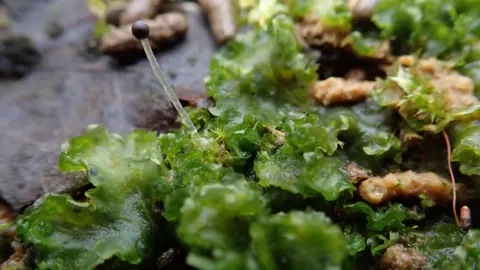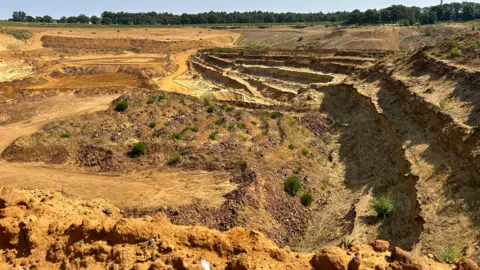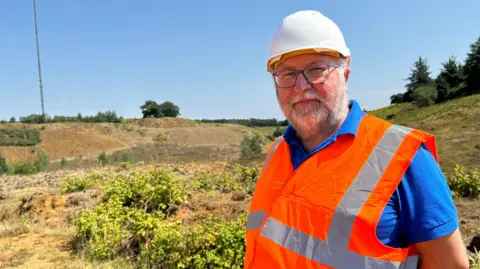Rare 5mm plant found at quarry nature reserve
 PA Media/Astrid Biddle
PA Media/Astrid BiddleA rare species of plant has been found growing in a quarry after work to transform it into a nature reserve.
Sandy Heath Quarry in Bedfordshire is still being mined, but the RSPB is working with land owners Tarmac to create 80 hectares (200 acres) of wildlife-friendly land once mineral extraction ends.
Weedy frillwort, which is 5mm tall, was found at the sand quarry, the first time it has been found in the county.
"It's just a good example of the amazing diversity of life we're finding arriving at this site," said Peter Bradley, from the RSPB.
"This area is on the Greensand Ridge, which is an area which had heathlands and acid grasslands.
"We felt we could work closely together to provide fantastic habitat conditions for a range of wildlife.
"It's an area of really deep sand which means it is very free draining and low in nutrients which means it's a great place for heathlands."
 Kate Bradbrook/BBC
Kate Bradbrook/BBCProgressive restoration of the quarry started in the 1990s and it was hoped that one day site would be accessible to the public, but for now it can be seen from the Skylark trail at the top of the quarry.
As Tarmac extracts sand the RSPB said it followed behind to make the area an attractive site for wildlife.
Mr Bradley, senior site manager for The Lodge nature reserve at the bird charity's HQ in Sandy, said the terrain was ideal for species of spiders, wasps and "marvellous" sand martins.
"The quarry company leaves the cliff face alone and the birds have got a home and that's where they bring up their youngsters," he said.
 Kate Bradbrook/BBC
Kate Bradbrook/BBCThe birds have nests across hundreds of holes on the cliff face which they use until they migrate to western Africa after the British summer.
"They've got everything they need here, they're very resilient to the noise of the quarrying," said Mr Bradley.
"It's hard to say birds are grateful, but they're in just the right place for them."
 Kate Bradbrook/BBC
Kate Bradbrook/BBCEnrique Moranmontero, national restoration manager at Tarmac, said the quarry has been in use since the 1950s, and the firm extracted soft sand for use in asphalt.
"It's a great example of how mineral operators and conservation organisations can work together and produce these materials we need, but also have a positive impact over nature and leave a lasting legacy for the future generations," he said.
Follow Beds, Herts and Bucks news on BBC Sounds, Facebook, Instagram and X.
